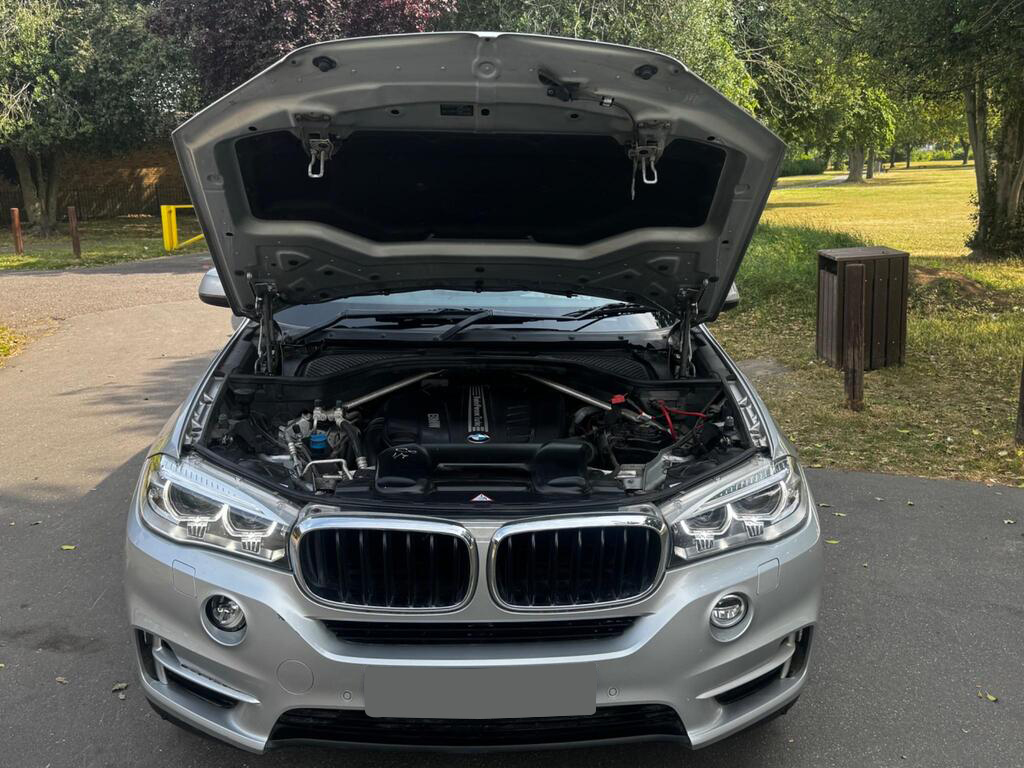How to Double Your BMW X5 Engine’s Lifespan
How to Make Your BMW X5 Engine Last Twice
BMW X5 is a midsize luxury SUV that is known for its sporty handling, performance and comfort. It delivers impressive off-road capabilities and on-road driving dynamics. With high performance and off-road capabilities, it comes with some of the most advanced safety features, including cornering brake control, dynamic stability control and driver attentiveness alert. This vehicle comes with a powerful engine like xDrive40i with a 6-cylinder engine, to the M50i and M Competition models with powerful V8 engines. BMW X5 engine can last around 150,000 miles to 200,000 miles. If you want to make your vehicle engine last even longer, with some simple care and extra maintenance, you can enjoy your vehicle engine for even longer, around 300,000 miles to 400,000 miles. If an engine replacement is ever needed, there are many BMW Engines for Sale that can help extend your vehicle’s life. This guide is here to provide comprehensive details and some simple hacks that, if you adopt, you can enjoy your vehicle’s power for even longer. We just shared some easy ways to make your vehicle’ engine last longer. So, let’s get started with it.
Why Your X5 Engine Needs Care
The BMW X5 is a big, powerful car. Its engine is made for speed and fun. But that means it works hard. If you drive in busy UK cities like London or in cold winters, the engine gets tired faster. If you don’t take care of it, parts can break, and fixes cost a lot. For example, a broken water pump or timing chain can cost thousands of pounds. Doing small things regularly can stop these problems and keep your engine happy for years.
Follow a Regular Care Plan
The best way to keep your engine strong is to follow a care plan. Your X5’s manual tells you when to change oil, filters, and fluids. Don’t skip these. The manual says to change oil every 10,000 miles or once a year. But if you drive on traffic or dusty roads, do it every 5,000 miles. Use good synthetic oil, like 5W-30, and a proper filter. Cheap oil can leave dirt in the engine, which hurts it over time.
Every 30,000 miles, clean the cooling system to remove muck that can block parts. Change air and fuel filters every 15,000 to 30,000 miles so the engine gets clean air and fuel. Check spark plugs and belts every 60,000 miles and replace them if they’re old. These little jobs make a big difference.
Use Genuine X5 Parts
When you need to replace something, use parts made for the X5. These are called OEM parts, and they fit your car perfectly. Other parts might be cheaper, but they can break faster or cause trouble. For example, a bad air filter can let dust into the engine, which is bad.
Look After the Cooling System
The cooling system keeps your engine from getting too hot. If it overheats, it can break. Check the coolant level every month and add the blue coolant made for BMWs. Don’t use the green stuff from random shops—it can hurt parts like the water pump, which costs a lot to fix. Look for leaks in hoses or the radiator, and fix them fast. A tiny leak can cause big problems.
Drive Carefully
How you drive affects your engine. Driving fast or braking hard makes the engine work too hard. It wears out parts like the timing chain quicker. Instead, start slowly and brake softly. Let the engine warm up for a minute before driving, especially in cold UK winters. This helps the oil flow and protects the engine.
Use Good Fuel
Your X5 likes high-quality fuel. Use premium petrol with a high octane number, like 91 or above. This stops knocking sounds that can hurt the engine. Bad fuel can have dirt that blocks parts or leaves muck inside. Fill up at trusted petrol stations. If you’re worried about fuel quality, add a fuel cleaner every 10,000 miles to keep things clean.
Check All Liquids Regularly
Besides oil and coolant, your X5 needs other liquids to stay healthy. Check the gearbox, brake, and steering liquids every few months. If they’re low or dirty, they can make parts rub and break. Change these liquids when the manual says, usually every 30,000 to 60,000 miles. Use the exact liquids the manual lists—wrong ones can cause damage.
Watch for Warning Signs
Your X5 has lights and sounds to tell you if something’s wrong. If the check engine light comes on, don’t wait. Use a tool called an OBD-II scanner to find the problem, or take it to a mechanic. Small issues, like a bad sensor, can grow into big ones if you ignore them. Listen for weird noises, like bangs or scrapes, and look for smoke or strange smells. These mean something’s not right. Fixing problems quickly keeps your engine safe.
Keep Software Up to Date
Your X5’s engine runs better with the latest software. Updates fix problems and make the engine use fuel better, which reduces wear. Ask your mechanic to check for updates every year. Updates are usually fast and don’t cost much, especially during regular checks. It’s like giving your engine a little boost without touching it.
Store Your X5 Well
If you’re not driving your X5 for a while, like during a long holiday, store it properly. Fill the petrol tank to stop dampness, and add a fuel stabiliser to keep the petrol fresh. Take the battery out so it doesn’t go flat. Keep the car in a dry, covered place, like a garage, to stop rust. Before driving again, check all liquids and let the engine warm up slowly. Good storage stops problems like blocked fuel lines, which can stress the engine.
Avoid Common Problems
Some X5 models have known issues. For example, 2011 X5s might stall, and 2008 models can leak water from the sunroof, hurting electronics. UK car sites say high-mileage X5s (over 60,000 miles) can get oil leaks or water pump trouble. Knowing this helps you act early. If you’re buying a used X5, get it checked by a mechanic and look at its repair history.
Pick a Strong Engine

Some X5 engines last longer than others. The inline-6 engines, like the 3.0l in older models or the B58 in new ones, are very tough. Diesel engines, like the xDrive35d, can go over 300,000 miles if you look after them. V8 engines, like the N63 in some 50i models, are strong but can have costly problems, like valve seal issues. If you’re choosing an X5, check the engine’s reputation.
Find a Good Mechanic
Fixing a BMW can cost a lot. Find a local mechanic who knows BMWs well. Look at online reviews or ask other X5 owners in the UK for ideas. A good mechanic uses proper parts and won’t charge for things you don’t need. Get to know your mechanic. They’ll understand your car and spot problems early. This can help your engine stay healthy.
Watch for Wear at High Miles
When your X5 gets to 100,000 miles, parts like the water pump or timing chain might wear out. These fixes can cost £800 to £2,000. Regular checks can catch these things before they hurt the engine. Don’t worry about high miles. With care, your X5 can keep going.
Driving Conditions Matter
Where you drive changes how long your engine lasts. Busy UK cities like Manchester or Birmingham are tough on engines because of stop-and-go traffic. Hot summers or cold winters can stress parts. If you drive on dusty or salty UK roads, wash your X5 often to stop rust. Change your care plan based on where you drive. For example, change oil more often in dusty areas or check the coolant in hot weather. These small changes help your engine last.
Wrapping Up
You can make your BMW X5 engine last twice as long. Follow a care plan, use proper parts, and drive gently. Check the cooling system, use good fuel, and watch the liquids. Fix warning signs fast, update software, and store the car well. Pick a strong engine, find a good mechanic, and adjust for where you drive. It takes work, but you’ll get a fun, powerful car for years. Your X5 is more than a car—it’s for family trips, adventures, and daily drives. Look after its engine, and it’ll stay with you. Start with something easy, like checking your oil or booking a check-up. Your engine will love it, and you’ll enjoy driving even more.
READ MORE